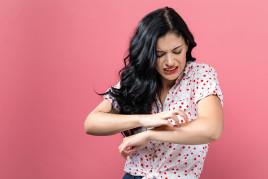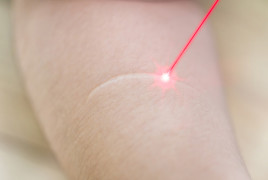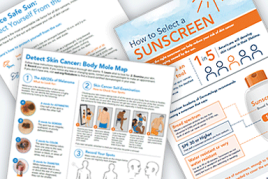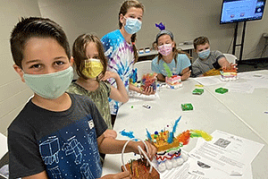Lichen planus: Signs and symptoms
Lichen planus is a condition that can cause many different signs and symptoms, including small bumps on the skin, irritated gums, splitting nails, nail loss, itchy bumps on scalp, and hair loss.
Where does lichen planus appear on the body?
Lichen planus can affect these areas of your body:
Skin
Scalp
Mouth (inside and lips)
Nails
Genitals
You may develop lichen planus in one area of your body. For example, some people develop it inside their mouth. For many of these people, their mouth is the only place that they have this condition. It’s also possible to have lichen planus in more than one area.
What you see and feel in each area will differ. For example, you may develop painless lacy, white streaks in your mouth and have a cluster of itchy bumps on your skin.
The following describes the signs and symptoms for each area.
What does lichen planus look like?
The following descriptions and pictures give you an idea of what lichen planus can look like and the symptoms that can develop.
Rash of shiny bumps
You may see red (A), purple (B), gray (C), or brown bumps. These bumps can appear anywhere on your skin but usually develop on the inside of the wrists, arms, legs, or lower back.

Bumps may join together
Sometimes, small bumps merge to form a larger area called a plaque. When plaques form, they usually develop on the shins and ankles.

Itchy skin
Not everyone develops itchy skin, but for some the bumps itch. The itch ranges from mild to intense.

Dark spots appear after bumps heal
Some people develop dark spots called post-inflammatory hyperpigmentation (PIH). People who have a darker skin tone are more likely to develop PIH. These dark spots do not harm your skin and often go away in time. However, it can take months to years for the dark spots to fade completely.

Bumps or plaques where skin touches skin
Some people develop a rash only on an area of their body where skin touches skin, such as an armpit (A), bend in the elbow or knee, crease where the leg meets the trunk, or under a breast. This is called inverse lichen planus. When the rash clears in one of these areas, darkened skin often develops (B).

Mouth changes
When lichen planus affects the mouth, it’s called oral lichen planus. Inside the mouth, it can develop on your cheeks, gums, tongue, or the roof of your mouth. It occasionally appears on the lips. On the tongue and insides of the cheeks, it usually causes lacy, white lines (A) or crops of small white spots (B).

Mouth may feel sore or painful
Inside your mouth, you have swelling and a violet or red color. Some people develop painful sores, which can appear on the gums, tongue, or roof of the mouth. Others say their mouth feels tender or burns. These symptoms can make eating painful, especially if you eat spicy or acidic foods.

Scalp changes
When this disease develops on the scalp, it’s called lichen planopilaris, or LPP. LPP often begins with small bumps on the scalp, and the scalp may feel irritated. Some people notice that their scalp feels tender or burns. Occasionally, hair thins. Some people develop patches of hair loss.

Nails feel rough and develop ridges
When lichen planus appears on the nails, it may affect one, a few, or all 20 nails. The affected nails lose their shine. Grooves and ridges can appear. Seeing a board-certified dermatologist for treatment when you first notice nail changes can avoid further changes.

Nail thinning, splitting, and disappearing
As the disease progresses, the affected nails become thinner and start to split. Nails may stop growing. Some people permanently lose one or more nails.

Genitals can develop a rash
When lichen planus develops on the genitals, it can cause a rash, along with soreness, burning, itching, or pain. On the vulva and soft, moist tissue that lines the vagina, this condition can cause purple or reddish-brown bumps and lacy-looking white lines. Lichen planus on the penis can cause violet spots or ring-shaped rashes.

Patients often ask their dermatologist why they developed lichen planus. To see what can cause this condition, go to Lichen planus: Causes.
Images
Images 1, 2, 4, 5, 7-9, 11, 13-16: Produced with permission from ©DermNet www.dermnetnz.org 2025.
Image 3 10: Used with permission of the Journal of the American Academy of Dermatology:
J Am Acad Dermatol. 2024 May;90(5):1092-7.
Images 6, 12, 17: Getty Images
References
Goldstein BG, Goldstein AO, et al. (section editors: Dellavalle RP, Callen JP). “Lichen planus.” UpToDate. Literature review current through 11/2024. Last updated 8/2024.
Gupta MK, Lipner SR. “Review of nail lichen planus: Epidemiology, pathogenesis, diagnosis, and treatment.” Dermatol Clin. 2021 Apr;39(2):221-30.
Shiohara T, Mizukawa Y. “Lichen planus and lichenoid dermatoses.” In: Bolognia JL, et al. Dermatology. (fourth edition). Mosby Elsevier, China, 2018: 188-90.
Tziotzios C, Lee JYW, et al. “Lichen planus and lichenoid dermatoses: Clinical overview and molecular basis.” J Am Acad Dermatol. 2018 Nov;79(5):789-804.
Written by:
Paula Ludmann, MS
Reviewed by:
DiAnne Davis, MD, FAAD
Elisa Gallo, MD, FAAD
William Warren Kwan, MD, FAAD
Shari Lipner, MD, PhD, FAAD
Last updated: 1/27/25
 Atopic dermatitis: More FDA-approved treatments
Atopic dermatitis: More FDA-approved treatments
 Biosimilars: 14 FAQs
Biosimilars: 14 FAQs
 How to trim your nails
How to trim your nails
 Relieve uncontrollably itchy skin
Relieve uncontrollably itchy skin
 Fade dark spots
Fade dark spots
 Untreatable razor bumps or acne?
Untreatable razor bumps or acne?
 Tattoo removal
Tattoo removal
 Scar treatment
Scar treatment
 Free materials to help raise skin cancer awareness
Free materials to help raise skin cancer awareness
 Dermatologist-approved lesson plans, activities you can use
Dermatologist-approved lesson plans, activities you can use
 Find a Dermatologist
Find a Dermatologist
 What is a dermatologist?
What is a dermatologist?